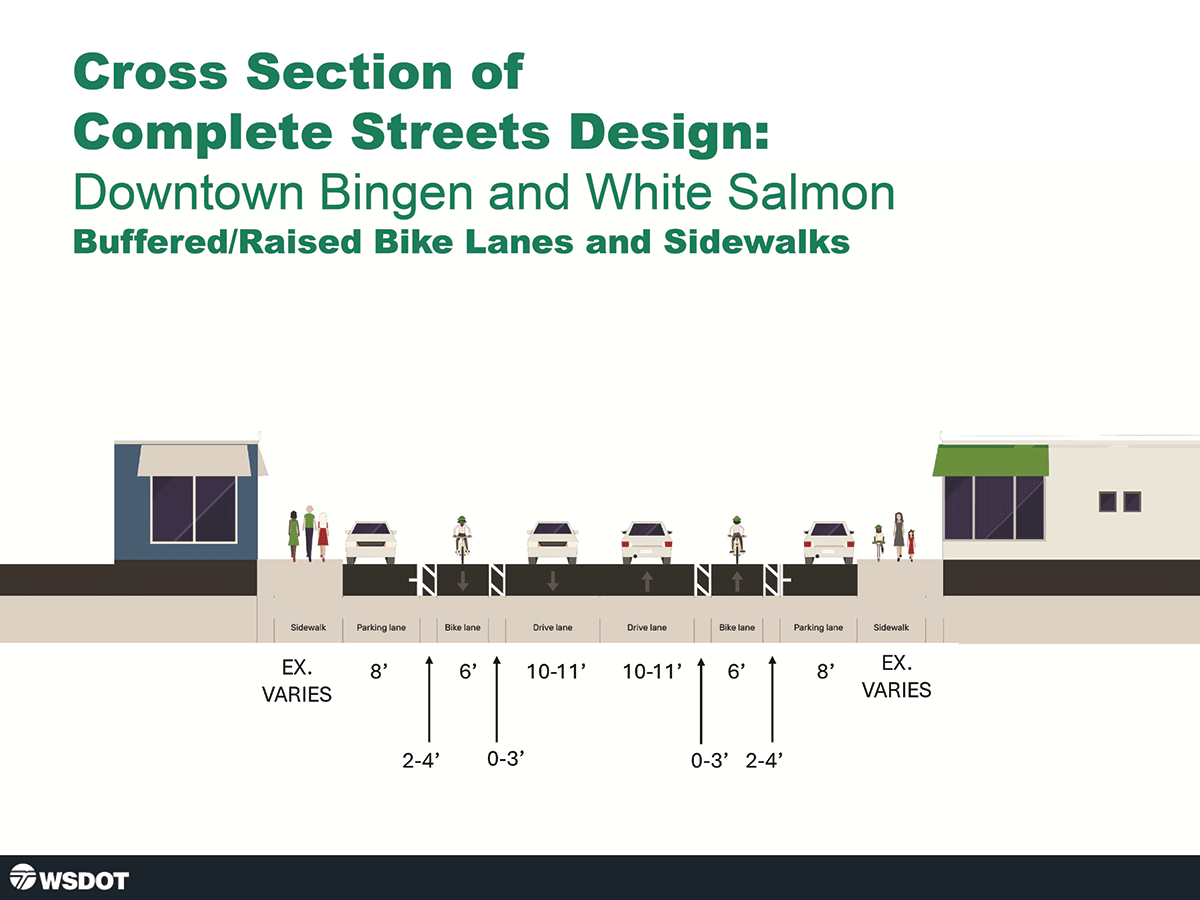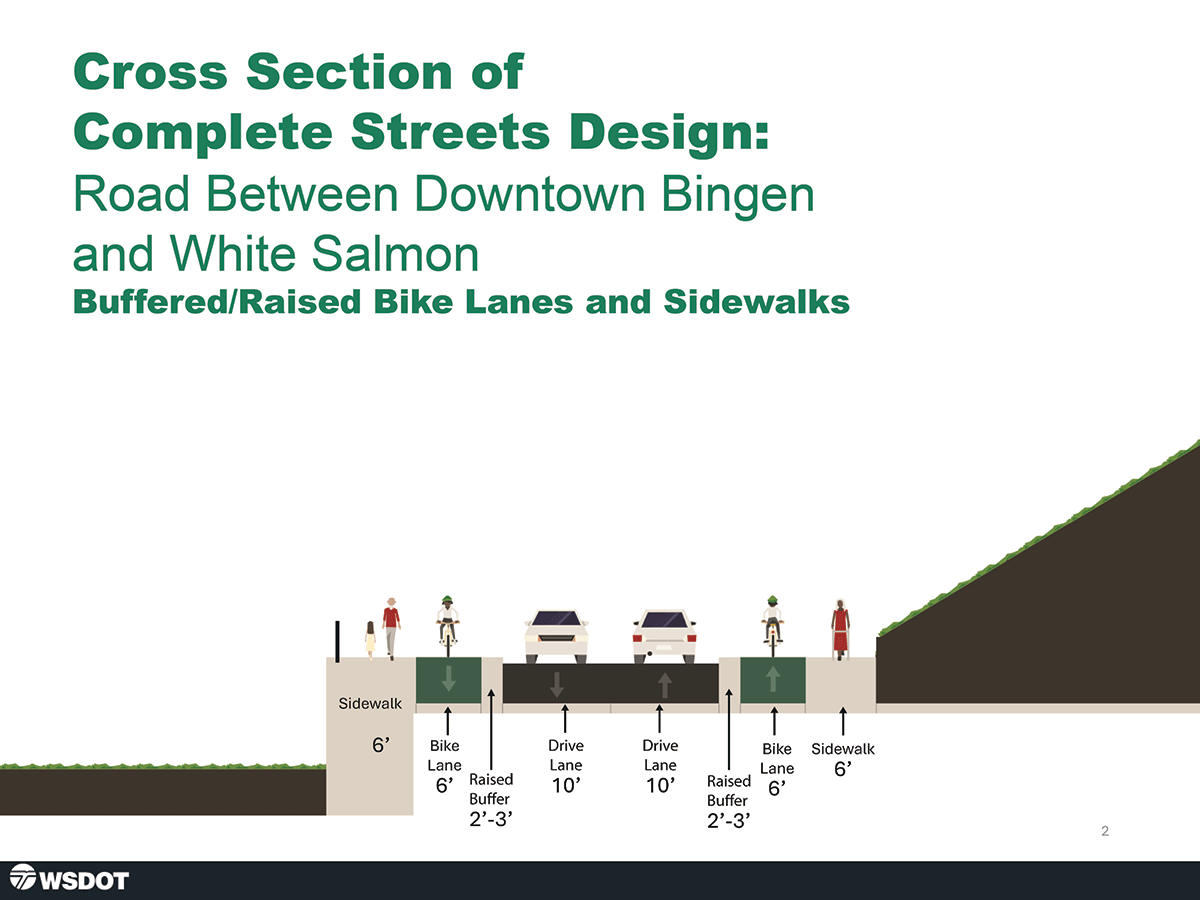The design includes buffered bike lanes in downtown Bingen and White Salmon and raised bike lanes going up the hill between the two downtowns. The design has a sidewalk on both sides of the highway for the entire length of the corridor.
A buffered bike lane is a bike lane with a painted area between the bike lane and vehicle traffic. This painted buffer increases separation between cars and people riding bikes and improves safety.
On a raised bike lane, the bike lane is elevated from the road to physically separate cars and people riding bikes to improve safety.
They include these parameters:
- Vehicle lane width: 10 feet
- Shoulder width: 2 feet
- Bike Lane Width: 6 foot minimum
- Bike Lane Buffer: 2 foot minimum
See the “cross sections” below. This is how it would look from a street-view perspective.


Do you have any questions or comments about these cross sections? Use our feedback form to share your thoughts
Design Benefits
- Level of Traffic Stress 2, which is more comfortable for people walking and biking and meets the state Legislative requirements.
- Separation between people walking and biking, which public feedback supported.
- Maximizes parking using the latest WSDOT standards.
- Provides pedestrian and bike access on both sides of the road, which reduces the need for crossings.
- The layout allows a balanced widening of the corridor on both sides of the highway. This is a benefit especially with the steep terrain on the section between the two cities.
A Word About Parking
Because WSDOT needed to bring the highway down to a Level of Traffic Stress of 2, we had to remove several parking spaces in downtown Bingen and White Salmon.
- We understand the community’s concerns about the potential loss of on-street parking and its impact on businesses, visitors, and residents.
- WSDOT is actively working to address these concerns by evaluating different design options to conserve parking.
- We’re engaging with local businesses and stakeholders to identify the best ways to mitigate parking impacts while meeting safety and mobility goals.
- We’re also balancing parking needs and considerations such as space constraints, connectivity, and overall safety.
- While some parking adjustments may be necessary, these improvements aim to create a more safe, accessible downtown that can increase foot traffic and economic activity in the long run.
